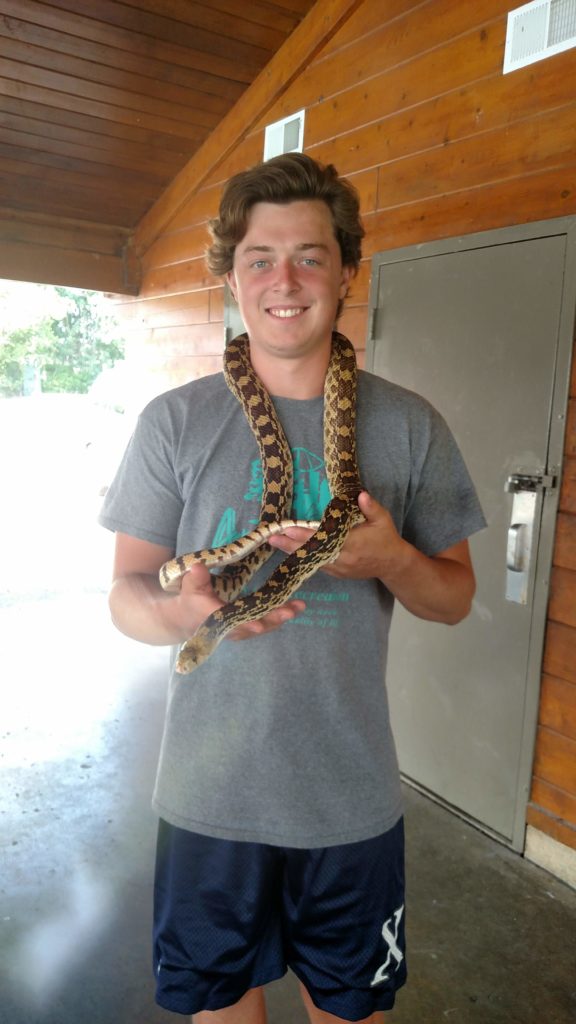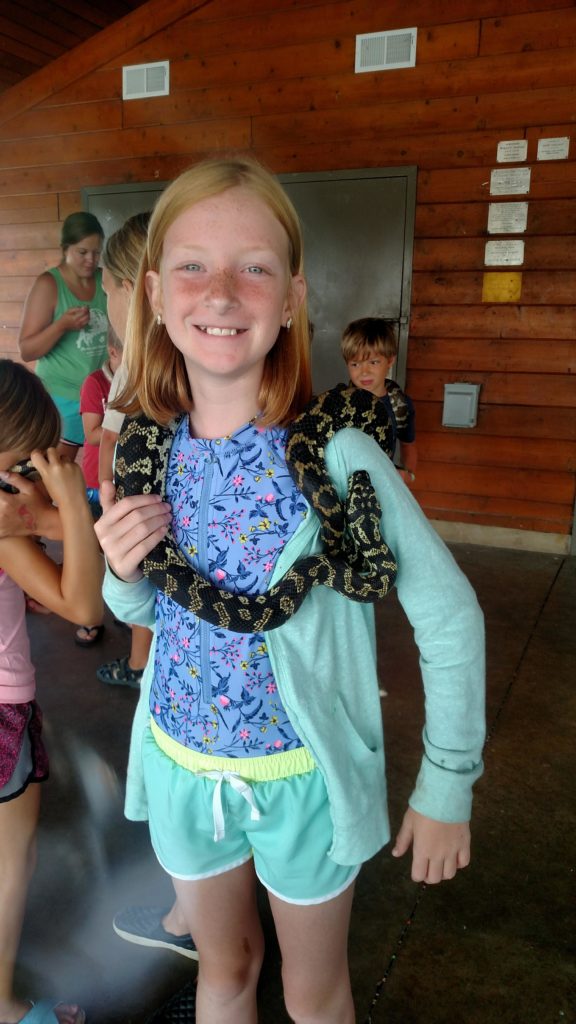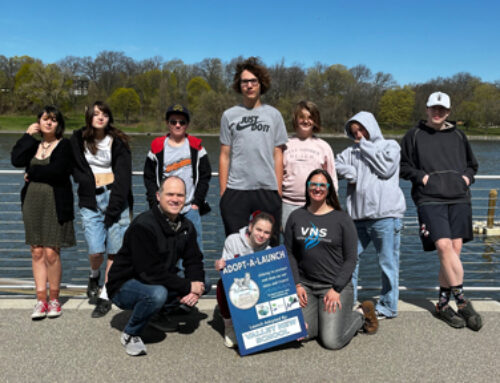FWWA has contracted with the City of Appleton for the past seven years and has provided watershed-based lessons for campers attending Camp APRD. Campers can register for one week of camp, or the entire summer, with a maximum of 30 campers each week. Many kids return to Camp APRD year after year, and it’s nice seeing familiar faces. While we kept to the same themes or lesson subjects, we change up our lesson plans every year. Below is a recap of our adventures during he second half of our summer lessons:
Week Five: Aquatic Invasive Species
On July 19th, campers at the Appleton Summer Camp at Memorial Park had the opportunity to learn about aquatic invasive species (AIS) and even helped search a local lake! Winnebago Waterways Program AIS Coordinator Chris Acy started off by asking the kids to help get a definition of AIS before asking how invasive species get from one place to another. The campers were very excited to point out ways AIS are spread and were very good at identifying all the ways AIS get into our lakes. All the kids were then able to learn how to identify several AIS using specimens that Chris brought along.
Campers then put their new found knowledge to use right away as they helped search the shoreline of a local pond for invasive species. The kids used Aquascopes (large PVC tubes with a piece of plastic to view things underwater) and found a multitude of native plants and animals. Campers concluded their AIS adventure by completing an activity to learn about the habitat, impacts, and origin of three AIS; Curly leaf pondweed, Round goby, and Zebra mussels. A new wave of kids dedicated to stopping aquatic invasive hitchhikers are out protecting our lakes!
Week Six: Stream Searching
 Stream week is a favorite for the summer camp kids! We started by talking about what makes a stream “healthy.” The kids offered their ideas about determining whether or not a stream is healthy. They talked about the clarity of water, the way it smells, and if there is garbage or chemicals in the water. Next, we talked about macroinvertebrates and how their presence in a stream can be an indicator of the level of pollution in the waterway. The campers were shown pictures and asked to search for caddisfly larva, damselfly nymphs, and dragonfly nymphs. We walked over the stream in the park and used nets to search for critters. They found many macroinvertebrates including leeches, worms, and snails, but were really excited when one of them found a large dragonfly nymph. Afterwards, they played stream bingo and many campers won prizes.
Stream week is a favorite for the summer camp kids! We started by talking about what makes a stream “healthy.” The kids offered their ideas about determining whether or not a stream is healthy. They talked about the clarity of water, the way it smells, and if there is garbage or chemicals in the water. Next, we talked about macroinvertebrates and how their presence in a stream can be an indicator of the level of pollution in the waterway. The campers were shown pictures and asked to search for caddisfly larva, damselfly nymphs, and dragonfly nymphs. We walked over the stream in the park and used nets to search for critters. They found many macroinvertebrates including leeches, worms, and snails, but were really excited when one of them found a large dragonfly nymph. Afterwards, they played stream bingo and many campers won prizes.
Week Seven: Insects Everywhere
This week, campers learned about the characteristics that define all insects like having antennae, three sets of legs, a head, abdomen, and thorax, etc. We also  talked about the different habitats in the park, and then used nets and went looking for some insects. The campers found so many different insects, and some of the bugs tried out the bug playground. The kids found insects in the fishing pond, wetlands, and prairie. We discussed how pollution can affect these habitats and the insects themselves. All the insects were released.
talked about the different habitats in the park, and then used nets and went looking for some insects. The campers found so many different insects, and some of the bugs tried out the bug playground. The kids found insects in the fishing pond, wetlands, and prairie. We discussed how pollution can affect these habitats and the insects themselves. All the insects were released.
Week Eight: Snakes Alive!
For the second year, Steve Keller’s traveling Snake Show stopped by for the final day of our lessons at the park. Steve talked about how the snakes come to live with him, the different habitats the snakes live in, and the special care and attention each snake needs. The campers were very excited to have the chance to hold, pet, and wear the snakes around their necks. Check out some of the pictures from our last day at Memorial Park!





We look forward teaching summer campers in 2019!
For more information contact, kelly@fwwa.org.






